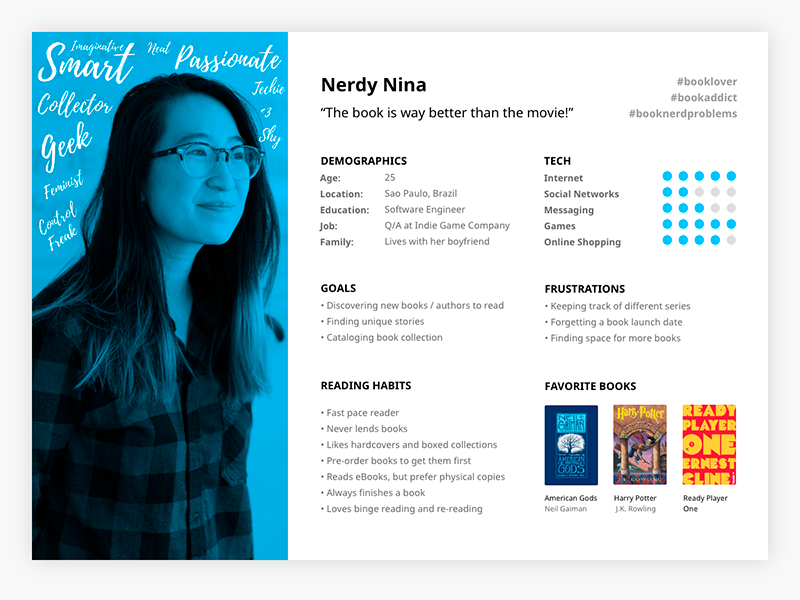Table of Contents
The importance of buyer personas for orienting communication
How well do you really know your target audience?
I’m not talking about an indistinct group of people who want to buy a product to satisfy a need. You have to be much more specific, otherwise you risk spending time and money that bring little in return.
In particular, when you’re designing communication and marketing strategies, it’s essential to precisely and granularly identify your target audience. Companies with an in-depth knowledge of their target audience’s characteristics will be better able to differentiate themselves from the competition by creating stronger and longer-lasting relationships with people.
One of the tools most commonly used to achieve this in communication and marketing is the buyer personas model, which aims to create an archetype of a business’s target customer. Let’s take a closer look.
How can buyer personas help your business?
Buyer personas are ideal representations of your target audience. They are archetypes that represent a wider group of people – a customer segment.
They involve creating one or more ideal customers by outlining aspects of such as:
- Profession
- Age and place of residence
- Ambitions
- Lifestyle
- Passions
- Fears and frustrations
- Relationships with other people and other brands

Buyer personas
Below, I’m going to show you an example of a persona.
As we’ll see later, a buyer persona is put together from real data, surveys, interviews and market research. To do this, your business will certainly need more than one specialist tool.
Conducting analyses, collecting data and thinking about these models is fundamental. It enables you to put yourself in the shoes of the target audience and understand what they like (and don’t like), the difficulties they face in their daily lives and what they really need.
Who are we aiming for? That’s the question to ask when creating buyer personas. An in-depth knowledge of the target audience is the key to designing effective products.
Here are some of the biggest advantages of buyer personas:
- They foster empathy: finding out about your customers’ characteristics and bringing them to life through this type of model allows you to change perspective: from that of a marketer to that of a customer. Sometimes, data can highlight unexpected needs and expectations: the closer we get to the customer, the better the product or service.
- They improve the design phase: buyer personas will help your business to design products, services and offers that are more precisely tailored to people.
- They help the whole team: buyer personas promote a customer-oriented company culture and guide the whole team. They enable marketing objectives to be set based on a clear understanding of customers, which ensures that everyone in the company is singing from the same hymn sheet.
How do you create a buyer persona?
Now we know what buyer personas are, it’s time to look at how they’re generated.
For the persona model to work, you need data. It’s easy to fall into the trap of thinking you already know what your customers are like and what they need. It’s a mistake that can be avoided through observation and the collection of real data that is up to date and as specific as possible.

There are a number of ways to gain these insights:
- Interviews: to get a deeper understanding of what your customers need, you’ve got to meet them. Speak to them by phone or face to face (or arrange a video call).
- Surveys: while surveys don’t let you drill down as much as interviews, they do allow you to reach a greater number of people. What’s more, if surveys are sent after specific actions, they will be even more useful. For example, customers who have just bought a product could then be emailed a survey which, once completed, will give them 10% off their next purchase. A useful tool for this is Google Forms which, in a just a matter of clicks, allows you to create a survey and share it with a link. There are also many alternatives out there, like SurveyMonkey and Typeform.
- Market research: online, you will often find lots of research that’s already been done into your market. If you can’t find what you’re looking for, it might be worth considering commissioning your own research from a consultancy firm. Obviously, you’ll need to conduct a thorough cost-benefit analysis before doing so.
- Real-life experience: draw on your own experience. Over the years, you will have no doubt built up a picture of your target audience and their behaviour, which can be used to craft an even more life-like buyer persona.
- Web and social analytics: your business is swimming in a constant stream of data. Examine the insights offered by your social media pages (e.g. Facebook Audience Insights), look at the data provided by your website (using a tool like Google Analytics) and at the performance of your newsletter (providers like Mailchimp offer vast amounts of data).
Once you’ve collected this data, the next step is to analyse it and identity audience clusters.
- What behaviour do they have in common?
- What differences are there between age groups?
- Does the audience have a shared background or culture?
- What characteristics do the most loyal customers have?

These questions and others will help you to differentiate between groups and work out how many buyer personas to develop.
Tools for developing buyer personas
The time has come to flesh out our buyer personas. But where do we start? Three tools can help us to organise the data we’ve collected:
- Make My Persona: the most famous online buyer personas generator is offered free by Hubspot and lets you follow a step-by-step process, gradually putting together all the characteristics that make up each customer “type”.
- Semrush Persona: this tool provides various templates for creating the archetype that best represents the target segment. You can choose between three different types, depending on your objectives: default, B2B or user persona. A simple form will then let you add all the information that you’ve collected.
- Xtensio: generate visually compelling buyer personas using over 100 free templates and an intuitive editor.
As I’ve already mentioned, once you’ve developed your buyer personas, share them with your teams so that everyone knows the type of customer you’re targeting and can use them to create communication and marketing campaigns (as well as effective content). For example, identifying pain points will let you better tailor messages so that they say exactly what users want to hear.
Don’t forget that, like many business activities, this is a continuous process. Over time, the habits and behaviours of buyer personas can change and it’s up to you to be alert so that you can update these models to reflect these changes.



